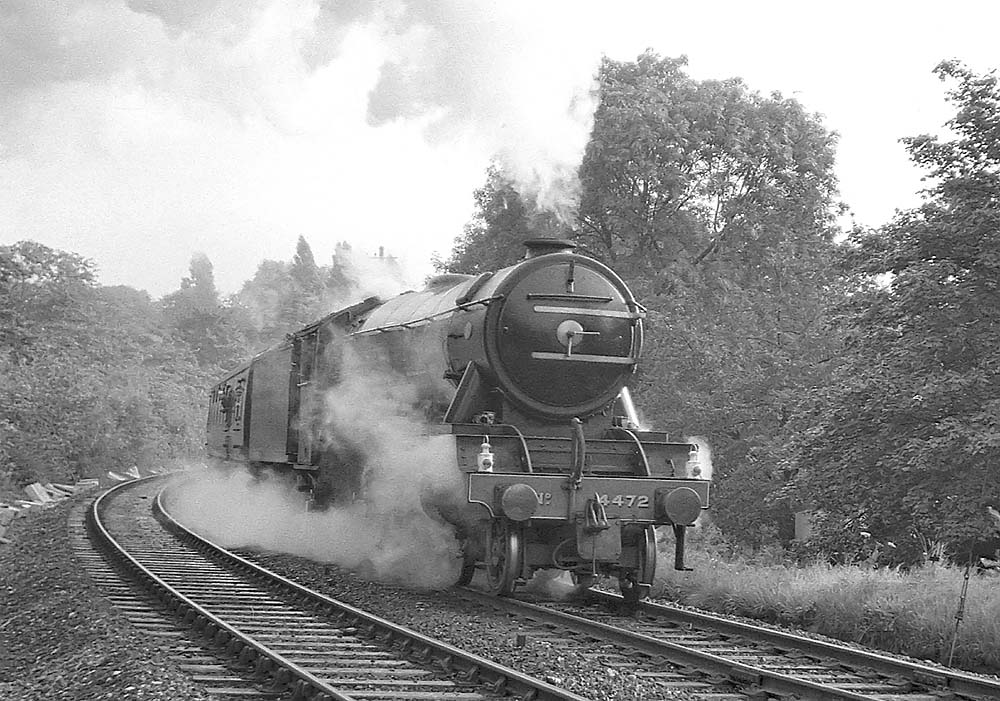 |
|
GWR Route: Banbury to Wolverhampton
Handsworth & Smethwick: gwrhs2636
 |
Preserved LNER 4-6-2 A3 No 4472 'Flying Scotsman' passes
through Handsworth Park at the head of an enthusiasts special on 12th September
1964. The locomotive was built at Doncaster Plant in 1923, construction having
been started under the auspices of the Great Northern Railway (GNR). It was
built as an A1 Class locomotive, initially carrying the GNR number 1472,
because the LNER had not yet decided on a system-wide numbering scheme. Flying
Scotsman was something of a flagship locomotive for the LNER and it represented
the company at the British Empire Exhibitions at Wembley in 1924 and 1925.
Before this event, in February 1924, it acquired its name and the new number of
4472. From then forward it was commonly used for promotional purposes. With
suitably modified valve gear, this locomotive was one of five Gresley Pacifics
selected to haul the prestigious non-stop Flying Scotsman train service from
London to Edinburgh, hauling the inaugural train on 1st May 1928. For this the
locomotives ran with a new version of the large eight-wheel tender which held 9
long tons of coal. This and the usual facility for water replenishment from the
water trough system enabled them to travel the 392 miles (631 km) from London
to Edinburgh in eight hours non-stop. The tender included a corridor connection
and tunnel through the water tank giving access to the locomotive cab from the
train to permit replacement of the driver and fireman without stopping the
train. The following year the locomotive appeared in the film The Flying
Scotsman.
On 30th November 1934, driven by Bill Sparshatt and running
a light test train, No 4472 became the first steam locomotive to be officially
recorded at 100 mph (160.9 km/h) and earned a place in the land speed record
for railed vehicles; the publicity-conscious LNER made much of the fact.
Retired from regular service in 1963 after covering 2,076,000 miles (3,341,000
km), Flying Scotsman gained considerable fame in preservation under the
ownership of Alan Pegler, William McAlpine, Tony Marchington and finally the
National Railway Museum (NRM). As well as hauling enthusiast specials in the
United Kingdom, the locomotive toured extensively in the United States (from
1969 to 1973) and Australia (from 1988 to 1989). Flying Scotsman has been
described as the world's most famous steam locomotive although many GWR and LMS
enthusiasts would challenge this statement.
 back back

|
